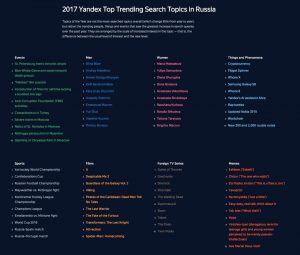by Brian Quarles, Op-Ed Contributor, January 6, 2017
This week, 21 years ago, on Microsoft’s website Bill Gates wrote an essay — we didn’t call them blogs back then, did we? — with a headline destined for countless textbooks to come. Titled simply “Content Is King,” Bill’s essay asserted that, just like with broadcast and radio technology before it, money that would be made on the Internet would not be in the manufacturing of hardware — but, instead, in the creation of content.
Nearly everything he said has held up — predicting our need for up-to-the-minute news and our desire to engage publications in conversation. At one point, he even called into question print media’s long-term prospects.
But, one bit that’s been tarnished slightly, perhaps ironically, is the idea that content is King. Gates couldn’t envision a world where advertisers and media companies competed for consumers’ attention with their own friends’ lives and ideas. He couldn’t foresee a world where cat photos and international news intermingled with equal visual importance.
Instead of a few publications and networks and stations creating the content, everyone is a content creator. More than that, everything is content now. And since everything is content, good content is everything.
As sports marketers, we’re lucky to work in one of the few industries where content is still actively sought out, even obsessed over. But, that’s not an excuse for laziness. Below are best practices for using sports personalities to create good content in 2017.
Choose the Medium that Fits Your Budget
Don’t produce a commercial for broadcast on a YouTube budget, and don’t buy a Twitter sponsorship with Snapchat takeover money.
If you’re strapped for cash and want to engage meaningfully, teams and sponsors at major events have had excellent success providing access to athletes on Snapchat — and so can your brand. It’s an effective, inexpensive way to give fans a glimpse of something they can’t get anywhere else. Plus, you’ll likely hang onto a few followers when the day is done. If you trust the athlete (and their agent), you don’t even need to be present.
With such a range of mediums, it’s easier than ever to find a way to meaningfully activate an athlete as a brand representative. But consider your goals and choose the medium most likely to accomplish them efficiently — it may not be the one you think of first.
Let Athletes Be Themselves – and Let Them Be Their Own Channel, Too
As social media has democratized consumers’ attention, that attention has shifted from publications to the players. ESPN has 6.7 million followers on Instagram. Odell Beckham, Jr. has 6.9 million. The game has changed, which is why there’s been a rise of new media platforms providing a channel for athletes to be themselves.
Look no further than the Derek Jeter-backed “Player’s Tribune,” home to honest, long-form articles by athletes from all leagues; or to LeBron’s “Uninterrupted Vertical” on Bleacher Report, a publication mainly delivering quickly captured, unscripted, “straight into the camera” Snapchat-style video illustrating players’ personalities.
Now, more than ever, fans are fans of individual players. This is great news for your brand, but you have to let athletes be themselves. Speak in their voice in your copy, channel their personality, and – maybe, most importantly – make sure the content will be shared through their social channels. After all, their association with your brand is only as valuable as the direct distribution.
Capture Live Content and Amplify It
If you’re a sponsor activating around a major sporting event, or capturing content in front of an audience of any kind, amplifying that message online is essential. This can be as simple as an event recap video that adds a few thousand extra eyeballs or an extended campaign adding millions.
With its “Undercover” series, Lyft has been using athletes to successfully activate its endorser campaign. The premise is simple: Major celebrity athletes pick up unsuspecting Lyft passengers (while disguised, of course) and slowly drop hints until the passengers uncover their driver’s true identity. Each video has earned widespread coverage in blogs, national and local news; it is a perfect example of everything that we’ve talked about here.
The production costs are next to zero – using a hidden camera and simple editing to achieve a look and feel appropriate for the chosen medium (YouTube) saves the entire budget for the cost of securing the athletes’ involvement. The athletes are allowed to be themselves (though, technically, they aren’t), and it lets their personalities shine. Distribution on their social channel is the primary way that these videos premiere. Once the spot is out there, the clever hook (and the notable brand/athlete partnership) earns coverage from platforms endemic and non-endemic, alike.
How Does Your Content Measure Up?
Brands can achieve notable exposure by engaging athletes and sports – no matter what their marketing budget may be. Just take heed – quick, simple, smart, nimble, personable and “amplifiable” is what content should be in 2017, when everything is content and good content is everything.
MediaPost.com: Search Marketing Daily
(79)
Report Post


